WARNING: NOT FOR THE SQUEAMISH
After
a year of limping and increasing pain in the left knee, I finally went under the knife on Friday to have a partial knee replacement. I'd already gotten three separate opinions that all said essentially the same thing: the knee was a bit of a mess and needed some degree of work/reconstruction/whatever. I eventually went with the
Florida Hospital Fracture Care Center. My wife had her left knee replaced by them (a second time) in 2008. Her surgeon was Dr. J. Dean Cole. I knew and trusted the group, but I was still too chicken to do it before now. My surgeon from that group was
Dr. Brian Vickaryous (pronounced "vicarious" or simply Dr. V). I like Dr. V for a number of reasons, but the most important is his past. In the mid-2000s he was a Major in the Army and an orthopedic surgeon with the 8th Forward Surgical Team in Iraq (
In Iraq, 'it's us versus death'; Mass.-based unit on constant call). Dr. V has seriously got his act together.
Another major reason for going with Dr. V was his
MAKOplasty robot. Yes, there's a robot in involved, the MAKO Rio. And you know how I am about robots; if there's a robot involved then I have to get involved.
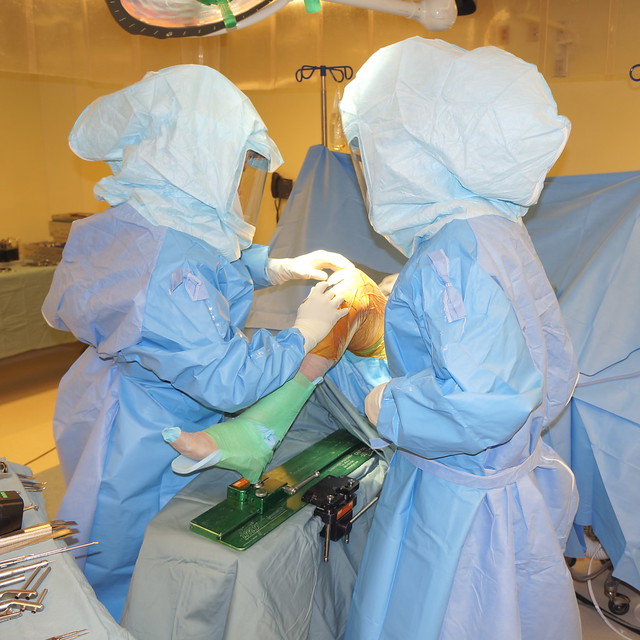 |
| Like a scene from the "Andromeda Strain", Dr. V (left) and a nurse are prepping my left knee for surgery |
There's a fair amount of preparation involved. Monday before the surgery I had a CT scan performed on the left leg. They used the scan to build a model of my leg, then used that to help program the Rio, specifically around the joint.
 |
| The Rio coming in |
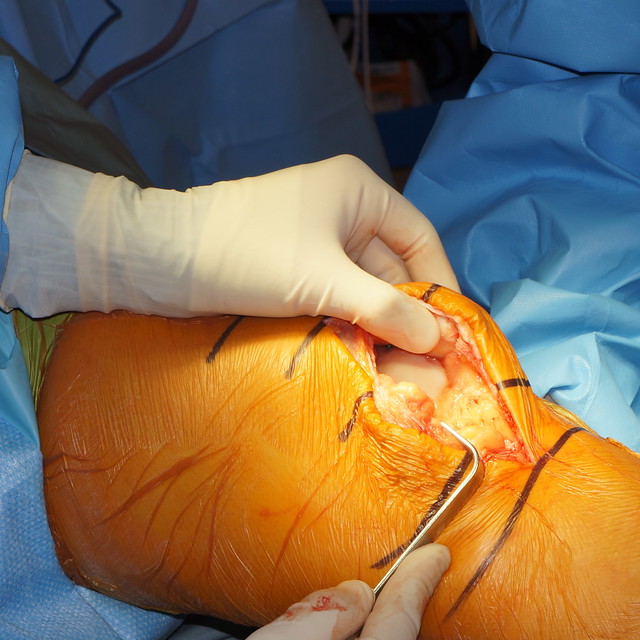 |
| The kneecap and other bits exposed |
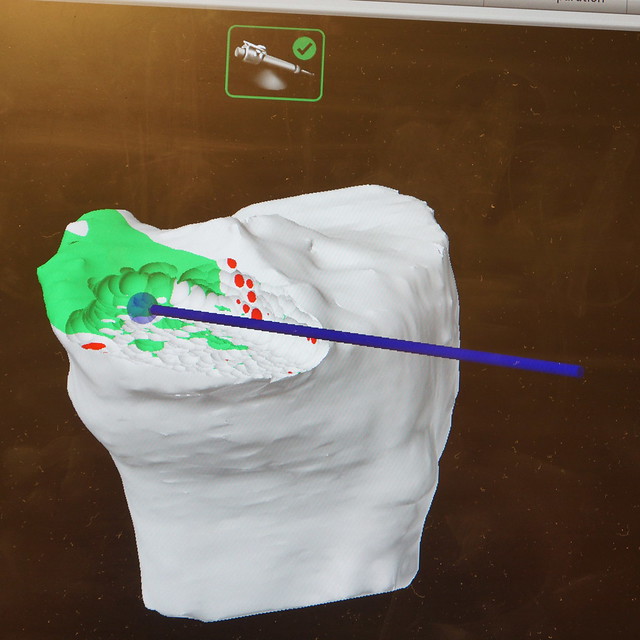 |
| Grinding away on the lower leg bone. This is the view from a monitoring station. |
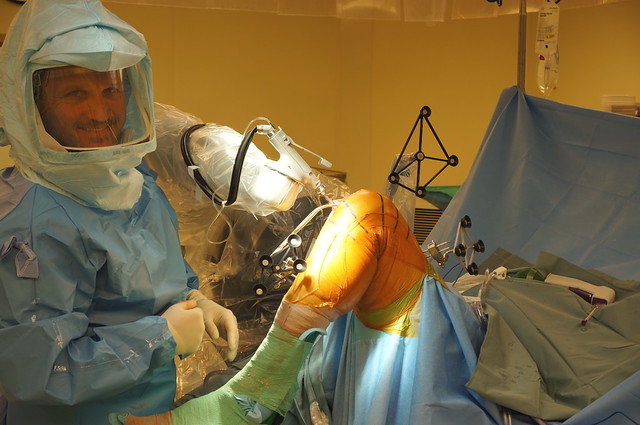 |
| Rio doing its thing on my knee. Dr. V is standing off to the side and smiling with pride. |
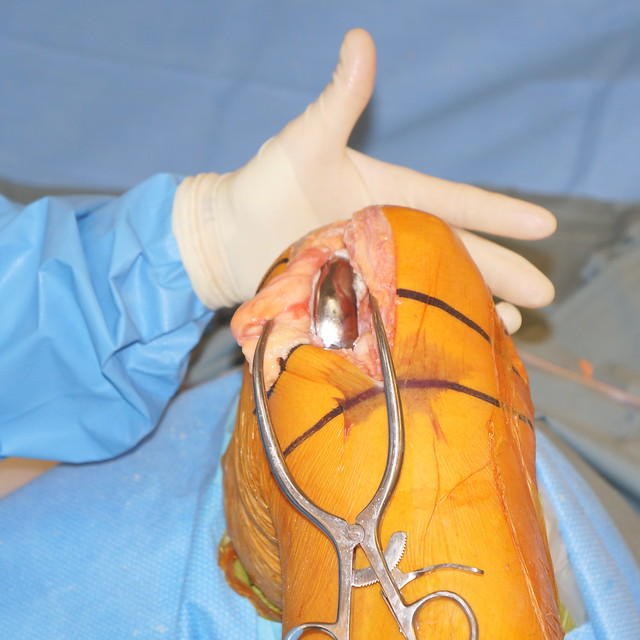 |
| The upper part of the partial knee replacement that fits into the upper bone at the joint |
All of this is new technology to me. I've heard of robotics being used in surgery, but I never knew of anything like the Rio in orthopedics. I deal with modeling (and simulation) in my job, but what was used for my knee opens up a whole new aspect of modeling and robotics I've never considered before.
 |
| The On-Q pain relief system feeding a catheter in my upper inner thigh |
Another interesting technological advancement is the pain relief system, or pain killer pump. It was a catheter and a valve that together fed a very tiny but constant stream of pain killer into the nerve cluster feeding the knee. I felt very little pain until they finally turned it down and removed it, at which point it all woke up and I hit a wall.
Now I feel the pain. But it's pain that can be managed with regular pain killers.
What's more amazing is I'm up and walking around. Yes, I have to use a walker to help, but I can walk around the floor flexing and exercising the leg. The last time I had a knee operation it was my right knee back in 1972, it was in a cast for four weeks and it required a lot of painful physical therapy after the cast was removed. That was state of the art back then, and I certainly appreciate what they did, because it still works 40 years later. But what I've seen lately is nothing short of amazing.
I'm writing this up in my room at Fl. Hospital. I'm tired and on another dose of pain meds. So before I get too incoherent I think I'll sign off and get some sleep. It's been a wild 48 hours and I'm tired.
P.S.
If you're wondering how the photos in the operating theater were taken, I got Dr. V's permission to have a nurse that was helping him at the time to take them during the "quieter" moments of the procedure. I just handed them my Sony after putting it into full auto.
Editorial
Some of you are probably thinking that we should robotize all of medicine and get the human out of the loop so we can (falsely) drive costs down. I hope that never ever happens. The robot in this case was there as an extremely precise tool to help the human surgeon perform this one particular procedure. There is a tremendous amount of medical "human in the loop" planning and diagnosis that only a specialist like an orthopedic surgeon can provide before the robot is even allowed near a patient. The robot is there to enhance, not replace. And the patients are not machines.







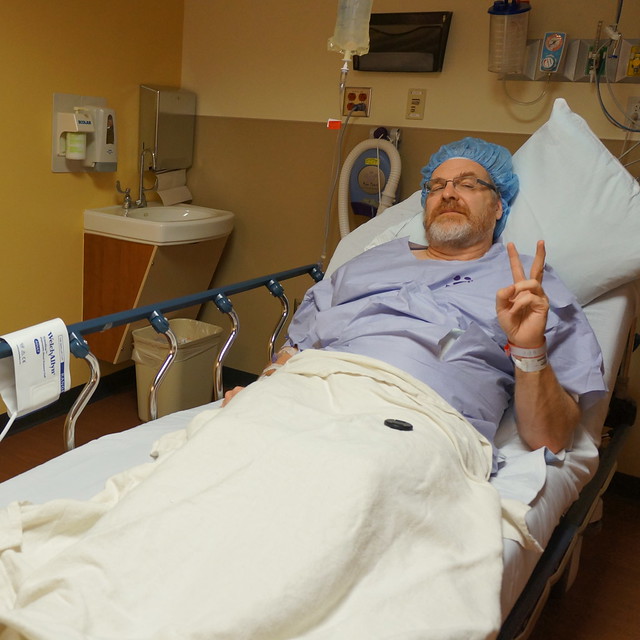

Get better soon Bill - and thanks for sharing those photos, and the story behind them.
ReplyDeleteThanks. I'll be fine unless I do something really stupid.
DeleteHi Bill, thank you for posting the above, very informative. I am considering this procedure after having my left knee "cleaned out" last Dec. 31, but I am still skeptical about the robot procedure. I just did the 5K Strides against Breast Cancer" Sat. for the ACS, and the side effects have reminded me I must make a decision soon. What I want to ask you now is....how did your recovery go - how much therapy did you need and how are you feeling now? Thank you:)
ReplyDelete